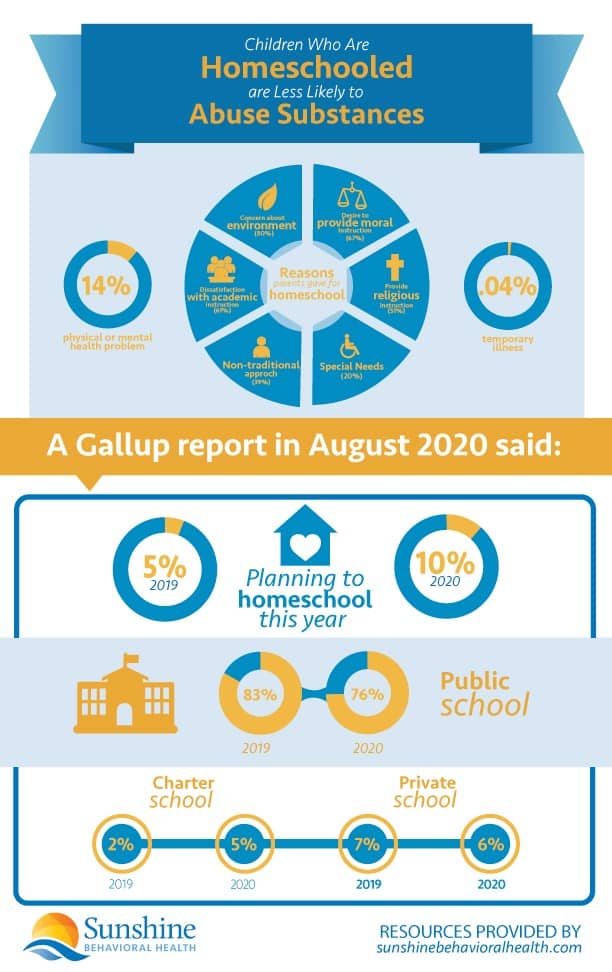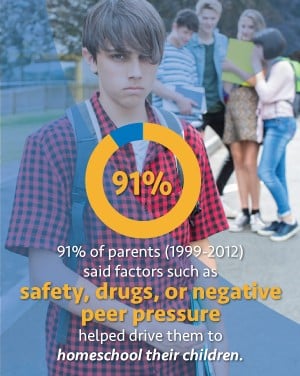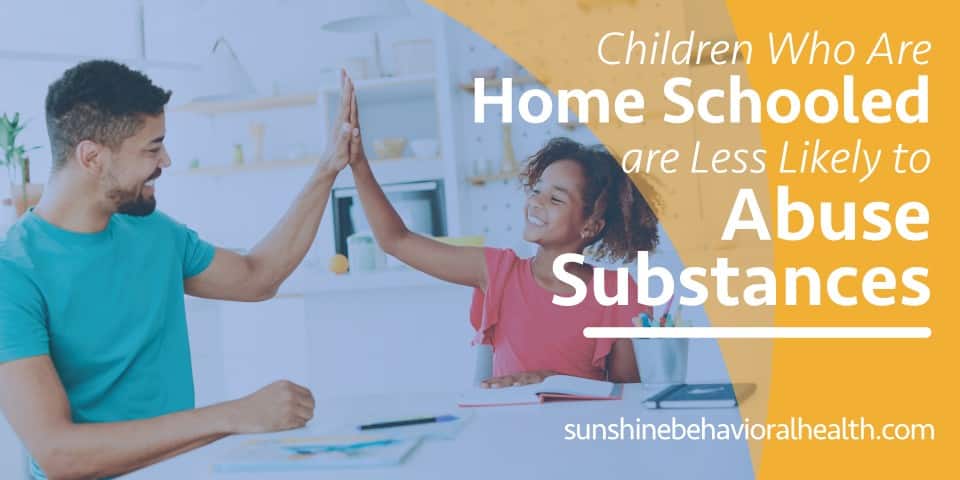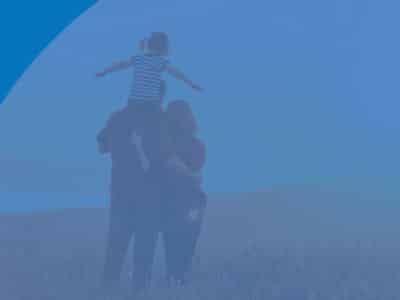Homeschooling used to be a choice. Starting in March 2020, due to the COVID-19 pandemic, it became mandatory, at least in a sense. To halt the spread of the novel coronavirus and flatten the curve, most U.S. children stayed and learned at home.
Not all schooling at home is homeschooling, however. Public and private school students were largely still educated by teachers, through prerecorded online lessons, live Zoom teleconferencing, or other distance learning methods.
But some parents — with poor Wi-Fi connections, a lack of electronic screen devices, the urge to do it themselves, or simply free time because their jobs were on hiatus — chose to embrace homeschooling in earnest. Some observers speculate that they may not go back.
What Is Homeschooling?
Parents who are stuck at home because they can’t leave their school-age kids alone and they’re not attending school in-person can choose either distance learning or homeschooling.
Homeschooling is when the parents (or a private tutor) teach the children themselves rather than send the child to private, charter, or public school. It can be time-consuming and costly because the parent educator may have little time or energy to also hold down a paying job.
If the parents aren’t the teachers and they are paying for online courses and instructors, that isn’t homeschooling, just a different type of distance learning. But there may be more choices for parents who want specialized education or schooling that focus on specific topics, such as religion.
According to one metropolitan Detroit-area organization, the Christian-oriented Homeschool Connections, their ranks grew 25% in 2020 as opposed to 10% in a normal year.
Usually, homeschooling is confined to the members of a single household, but not always. One more inclusive form of home school is the pod or bubble. In this practice, several families may come together to educate their children together, sometimes with a hired tutor instead of a parent.
The pandemic pod is one recent adaptation, providing childcare as well as schooling in an isolated or socially distanced group to prevent COVID-19 infection and spread.

What Is Required to Run a Home School?
The main requirement for running a home school is the desire to do it. It is a full-time job. You have to be a teacher, principal, and administrator. You also probably have to self-educate yourself in at least some of the subjects as you are teaching your children-students. It is a huge commitment.
As for other requirements, nearly every U.S. state — and nearly every school district — has unique (and often loose) rules and regulations for homeschooling. The advocacy group Home School Legal Defense Association has opposed stronger regulations for more than 35 years.
Among the differing requirements are:
- Whether you have to tell local authorities you are homeschooling.
- The extent of your education (college degrees and in some cases even high school diplomas are not required).
- Whether a criminal record disqualifies you.
- Which subjects you are required to teach.
- Whether your child/student’s educational progress is regularly assessed, as with standardized tests.
- Whether your children/students must be vaccinated.
Even these regulations may not apply if the home school teacher is a certified teacher.
In some cases, home schools are considered to be or overseen by accredited private schools and must follow the same regulations.
How Many Children Learn from Home?
It’s nearly impossible to determine how many schools have reopened for in-person or distance learning, how many are adopting a hybrid or wait-and-see approach, and how many parents will choose an alternative such as homeschooling. At this point, we can, at best, determine their plans, and there are numerous adages about the folly of relying on such.
According to the Kaiser Family Foundation, the U.S. had nearly 76 million children 18 or younger in 2018. A recent survey cited by Homeschool Expert.com said that more than half that number — 40 million school-age children — were still schooling from home if not necessarily homeschooling. (That may not reflect the fall 2020 semester.)
A Gallup report in August 2020 said 10% of parents polled planned homeschooling this year, up from 5% in 2019, while public school enrollments dropped from 83% to 76%. Those who said they would send their children to a charter school were also up (from 2% to 5%), while there was a decline in private (7% to 6%) and parochial (4% to 2%) schools.
In September 2020, EdChoice reported that North Carolina had the highest rate of school children in home schools at 7.6%, with the next highest state, Arkansas, four points behind at 3.6%.
It’s much the same in Britain. In March 2020, Forbes reported that homeschooling in the United Kingdom had grown 100% over the previous five years, and 700% in some parts of the realm.
Why Do Parents Choose Homeschooling?
While COVID-19 is a powerful motivator to homeschooling — parents don’t want their children to catch or spread the coronavirus, and they are learning from home anyway — it’s not the only reason.
In 2016, a National Center for Education Statistics homeschooling report, based on 1999-2012 data, found that 91% of homeschooling parents said their concerns were with the public/private school environment.
The 2016 National Household Education Survey (NHES) Program also rated the educational environment a top concern, but there were several more.
The main reasons cited by parents for homeschooling their children — and often they have more than one — included:
- Environment (80% said it’s a reason; 34% said it’s the most important reason).
- Moral instruction (67%; 5%).
- Academic instruction (61%; 17%).
- Religious instruction (51%; 16%).
- Nontraditional approach (39%; 6%).
Even though the number of students in homeschools has been increasing, the percentage of parents claiming these top reasons declined between 2012 and 2016. That suggests that more parents are claiming fewer reasons, that their motivations are “becoming more focused.”
Other reasons include because the child is temporarily ill (4%), has mental health or physical problems (14%), or other special needs (20%).
Is There More Child Abuse in Homeschool?
One possible, unspoken reason alleged by some opponents of homeschooling (and just as strongly denied by proponents) is that by keeping their children out of public school, abuse — physical, sexual, psychological — is easier to conceal. Advocates argue that the rate of abuse in homeschools is lower than in conventional schools, but lack of regulation makes it difficult to be sure.
It doesn’t seem that this data included the case of David and Louise Turpin. From 2010 to 2018, Turpin concealed their abuse of their 13 children, the oldest 29 years old — including torturing them and denying them basics such as health and dental care, enough food for proper development, and bathing — by claiming they were educating them in a home school.
COVID-19 and Homeschooling
Reasons specifically linked to COVID-19 include that, with single-family homeschooling, there is no need to wear masks.
When-and-if children can go to in-person schools during the pandemic, the parents have to make sure their children wear a mask, that they will keep the mask on, and they have to hope the other children will keep their masks on as well. Remember: wearing a mask is more for the protection of others than yourself.
It’s too soon to tell exactly how much COVID-19 has led to parents homeschooling their children, or if it will decrease when or if the pandemic is under control enough to allow schools to reopen as they were before.
Less Substance Use Disorder Among the Homeschooled
 “Environment” is a broad category that includes negative peer pressure and substance use disorder. The two are related and homeschooling may reduce their influence.
“Environment” is a broad category that includes negative peer pressure and substance use disorder. The two are related and homeschooling may reduce their influence.
Peer pressure is one factor that can lead to the use, misuse, and abuse of alcohol, prescription drugs, and smoking or vaping. According to 2002-2013 data from the National Survey on Drug Use and Health (NSDUH), the percentage of homeschooled students aged 12-17 who used these substances was never less than 1% lower than for conventional school students, and often much lower.
Each age group and substance had a different rate. For alcohol use, ages 12-14, the school rate was almost double that of home schools.
Homeschool students not only use less, but often strongly disapprove of alcohol, tobacco, and marijuana use.
Overall, homeschool students are less likely to have:
- Used any illicit drugs in the previous 12 months.
- “Easy access” to marijuana, cocaine, and crack cocaine.
- Been approached by someone selling illegal drugs in the past 30 days
And significantly less likely to have:
- Used ecstasy and hallucinogens. LSD showed no significant relationship.
- Met criteria for alcohol or cannabis use disorders. Other substance use disorders showed no significant association.
However, there were “no significant differences” regarding:
- Crack cocaine/cocaine
- Inhalants
- Stimulants
- Tranquilizers
Are Homeschooled Students Different?
Although the teen brain is more vulnerable to addiction, most teens — even those who use drugs or alcohol at least once — do not become addicts. Something must be different among those who do.
The question is why. Is there something different in the homeschooling experience that makes its students less likely to use, misuse, or abuse alcohol, drugs, and other substances? Or is there something different about homeschooled students?
Most proponents of homeschooling, in defending the practice, frequently say that children so educated are not different from conventionally schooled children. But at least one acknowledges that, yes, they are, including:
- Less indoctrination.
- Less exposure to popular consumer culture.
- Better opinions of and relationships with their parents and other adults.
- Less peer influence and dependence.
- More independence in general.
Why Are Home School Children Less Likely to Abuse Drugs?
According to the National Institute on Drug Abuse (NIDA), there are three main risk factors for addiction: biology, environment, and development.
Biology
Biology is not destiny, but it can influence our behavior. Your family history and what you put in your body can trigger addiction or protect you from it.
Genetics
Not everyone who uses or abuses drugs will become addicted, but it can run in families. So can many mental health issues, increasing the likelihood of a co-occurring substance use disorder (SUD). About half your risk of addiction is due to a genetic predisposition.
That’s no guarantee you will develop an SUD, but because children in home schools aren’t genetically different, homeschooling might not be enough to stop it either.
One homeschooled member of a Reddit recovery/support group, Adult Children of Homeschooling, has no interest in using drugs. Her homeschooled siblings, however, have no problem with tobacco, alcohol, or marijuana (and maybe neither do her parents; she calls them hypocrites but doesn’t specify why). They also try to persuade her to use these substances.
In this (admittedly anecdotal) case, genetics seems to have overridden homeschooling’s protection in two out of three people.
Nutrition
A healthy diet has long been considered an important part of recovery from addiction, but it also may help explain why homeschooled children are less likely to abuse drugs in the first place.
Although children in home schools get less physical exercise, they are “thinner, leaner, and report better diets” than children in conventional schools. They eat better food overall: no vending machines in the home, so less trans fat, less total and added sugars, and fewer calories overall.
Environment
It’s not primarily the building you live in or the quality of the air or water. In this case, “environment” refers to everything around you, particularly people — family, friends, coworkers, or fellow students — and everything that happens to you, your quality of life.
If you have experienced physical or sexual abuse or live in a household or area where it is common, that is a risk factor. If you are food or income insecure, that is a risk factor. Children who attend brick-and-mortar schools are more likely to have unstructured or free time. Often both parents work, so they are unsupervised once they leave school. Homeschool students have at least one parent around almost all the time.
Also, there’s more benefit to family dinner than the nutritional value of the food. Children who sit down to dinner with their parents at least five times a week have better self-esteem, feel more love and approval from their parents, earn better grades, have better mental health, and are less likely to abuse drugs or alcohol.
Temptation is a large part of many bad habits and destructive behaviors. If you aren’t exposed to them, you face less temptation. The lack of regular, unsupervised time with people who use or sell drugs reduces the likelihood that homeschooled children will want or be able to use them.
Not that the homeschooled (or their parents) are completely isolated socially. There are homeschool support groups and clubs where they can meet people with similar lifestyles and learn from each other: activities, clubs, places to go, and how they cope with or thrive in the homeschool atmosphere.
Pods are another way to not only shelter from COVID-19 but to interact with others.
Development
Addiction often starts in young people because the brain is still growing, still developing into the mid-20s. Because of this, the teen brain is especially prone to risky behaviors such as drug use leading to addiction.
Four risky traits associated with teens, addiction, and mental health issues are:
- They seek intense and extreme sensations. Drugs promise to provide this.
- They act impulsively. Most drug abuse starts without regard for the possible consequences. Poor impulse control is also a symptom of attention-deficit/hyperactivity disorder (ADHD).
- They misinterpret anxiety. As in people with panic disorder, they mistake the symptoms as serious illness or imminent danger. They may start taking drugs to self-medicate.
- They feel hopeless. That feeling — maybe driven by impulsiveness and severe anxiety symptoms — can lead to depression and alcohol or drug abuse.
The homeschooled brain is also developing, but may be protected by its better relationship with its parents, more freedom to learn at its own rate, and protection from excessive peer influence.
Homeschooling is not a cure-all. For some people, such as people who are trying to avoid bullies or other abuse (ostracism, mocking), a stay-at-home school may be a way to hide from a problem, to avoid confronting it, rather than an affirmative choice.
If that’s the case, homeschooling may only delay or even exacerbate the problem. Substance use disorder and mental illness could remain a possibility unless you listen to the children and get them help. A homeschooled child’s best defense against substance use disorder and other life ills might be their parents.
Homeschooling Resources
Sources
Medical disclaimer:
Sunshine Behavioral Health strives to help people who are facing substance abuse, addiction, mental health disorders, or a combination of these conditions. It does this by providing compassionate care and evidence-based content that addresses health, treatment, and recovery.
Licensed medical professionals review material we publish on our site. The material is not a substitute for qualified medical diagnoses, treatment, or advice. It should not be used to replace the suggestions of your personal physician or other health care professionals.







